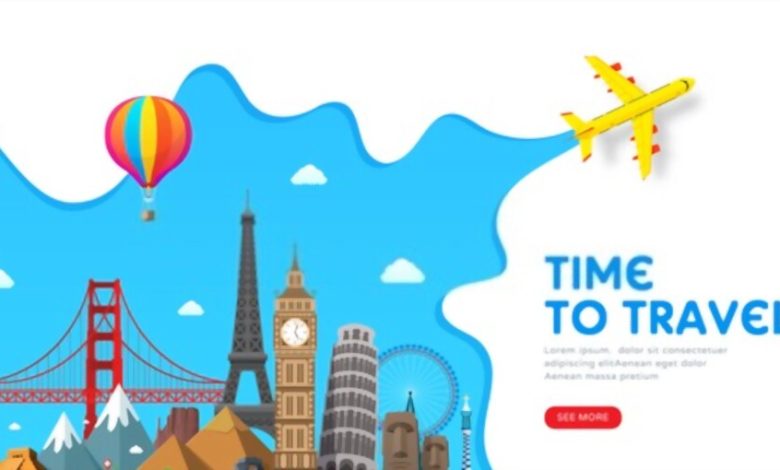How to Make Your Tourism Website SEO Friendly?

The process of making your tourism website SEO friendly is not as difficult as you might think. You just need to follow a few simple steps and you’ll be well on your way to getting a higher ranking in the search engines.
Content
When it comes to tourism websites, the content that helps the traveler is just as important as the layout of the site. The right content can set your brand apart from the competition. It can also attract tourists from all over the world. Here are a few tips to help you achieve this goal.
Create a content library. A travel-related content library should include a variety of content geared towards the different segments of your target audience. Depending on your product or service, you can target business trips, ecotourism, or even world exploration.
Write engaging content that can be shared and viewed by other users. You can improve your conversion rates by producing entertaining and informative content.
Producing helpful content can also increase your trust among your targeted consumers. This can be achieved by providing helpful insights and answering common questions. Developing your brand’s voice is also important.
If you are unsure how to create effective and attractive content for your website, contact an inbound marketing agency. Such agencies can provide your website with targeted content for a specific niche. They can also develop an outline and action plan for your travel-related content.
Include images and video. Use high-quality imagery to draw attention to your destination. These features will also make it easier for visitors to navigate and find information.
Keep track of your analytics. Use a free tool such as Google Analytics to track visitor traffic and conversions. Review your analytics at least once a month to understand what you are doing right and where you can improve.
Provide clear, easy-to-follow buttons. Your visitors need guidance through every page of your tourism-related website. In addition, they need to be able to access the content they are looking for easily.
Social media platforms
Social media marketing is a powerful tool to increase the success of a tourism business. In fact, it can even be an essential part of the marketing strategy. When used correctly, it can boost traffic, increase revenue, and provide customers with an authentic and engaging experience. It can also help to establish relationships with potential customers, thereby increasing the chances of a sale.
One of the best ways to increase the visibility of a tourism business is to promote events and special offers. Blogging is a great way to do this. You can also submit your website to leading bookmarking sites. This can lead to increased exposure, as well as better search engine rankings.
Search engine optimization (SEO) is a popular method for promoting a website design of tourism business. SEO provides similar effects to traditional marketing, but it is cost-effective. The most important aspect of SEO is to provide reliable results. Whether you are building a network or increasing revenue, you need to have a solid foundation.
As with all online marketing, you should have an active posting strategy. Consistent posting shows that your search engines feeds are alive and well. Additionally, you should use a mobile-first approach, which can significantly improve conversion rates.
Another effective marketing tactic is to post unique articles to niche blogs. These articles can be very helpful in driving free targeted traffic to your website. Posting to niche blogs can also help to elevate your search engine rankings.
One of the most important aspects of any marketing campaign is creating a positive emotional connection. This can motivate people to buy travel, engage with your services, or recommend your brand to others. With social media, you can capitalize on the power of personal connections to achieve these goals.
Mobile-ready websites
Travelers often turn to mobile devices when searching for travel information. It is important to have a website that is mobile-ready and optimized. This will help your site rank better in search results and provide a better user experience.
Many tourism websites have changed their layouts to be responsive. Responsive design ensures that the user will have a great experience no matter what device they use.
Almost half of the world’s traffic to the web comes from mobile. With this trend continuing, the importance of having a mobile-ready website will only continue to rise.
A mobile-ready tourism website is easy to navigate and allows visitors to plan their trips. It should include vivid images, package deals, and other helpful information. Tourism website designs should also make good use of call to actions and booking links.
Tourism websites should be clean and simple. These sites should offer quick loading times, a user-friendly layout, and strong visuals. They should also appeal to travelers of varying demographics.
Mobile-friendly websites are also designed to show users the content without having to zoom or rotate. This helps reduce bounce rates and improves the user experience.
Holiday Pirates features an appealing design, simple layout, and great vacation package deals. The website also contains a great video content section.
If your site is not mobile-friendly, it can have a negative impact on your conversions. Google gives high rankings to sites that are mobile-ready.
Internal links
When it comes to search engine optimization, internal links are a crucial component. They give visitors a sense of structure and flow on your site. And they help Google understand the importance of your site and your pages. The more links you have, the more likely it is that your pages will get high search engine rankings.
Internal links should appear on every page of your website. This gives your readers something to click on, reduces the bounce rate, and improves Dwell Time. Adding internal links can also boost the popularity of your most popular posts.
Using descriptive anchor text for your internal links is a good way to show your search engines that your target URL is relevant. Make sure you use keywords related to your source page’s content. A great way to do this is to link with a descriptive keyword that relates to the topic of your source page.
You don’t want to spam your search engines with too many internal links, though. If you do, you’ll lose a little SEO authority. Similarly, you don’t want to create a dead end for your readers. Too many links can be frustrating and confusing for users.
While you can use nofollow links, you can also take advantage of WordPress’s ability to calculate individual link click-through rates. It’s also a good idea to include contextual links on your page, pointing users to other pages that relate to the content on your source page.
Another important aspect of internal linking is to make sure your anchor text is optimized. Use a mix of descriptive keywords and relevant hrefs. Doing this will ensure that your links pass value to other pages on your site and also help optimize your content for the crawlers.
Long tail keywords
If you’re planning on building a website for a tourism business, you need to include long tail keywords. These keywords are usually specific, and will help you narrow down your target market.
Long tail keywords are a great way to boost your web traffic. They can also lead to more leads and more conversions. But if you don’t have the time or inclination to do all of the research on your own, you can turn to a professional SEO company like AP Web World. It has been in the industry for 10 years, and has provided valuable guidance to clients in many countries.
The first thing you need to do is write down your mission. Write down the things you want your website to do, and then find out what people are looking for when they do those things. Once you have a good idea of what people are searching for, you can start to create your list of long tail keywords.
Next, you can use your keywords to write content. A blog is a great place to do this. Each article should have at least one long tail keyword in the title, the first paragraph, and the body of the post. Also, link from your blog posts to your category pages. This helps Google understand the structure of your website.
Another great resource is Google Autosuggest. Using this tool, you can find popular search terms and low-competition long tail keywords.
You can also use focus groups, social media networks, and usability tests to find long tail keywords. Creating a list of these can be tricky. Use a keyword research tool, such as Keyword Planner, to help you brainstorm and create a list of your own.
Thanks for visiting thetrustblog




